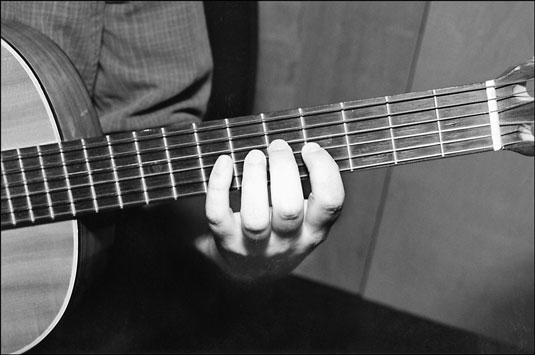Classical guitarists play their instruments quite differently from that of any other guitar style. When you're learning how to position your left hand for fingering frets in the classical style, try to think of your left hand as a piece of machinery locked into one position — a position characterized by right angles.
This position will help you to achieve an ease of playing and the optimal sound. As you move up and down the neck or across the strings, the little machine (of your hand) never changes its appearance. You simply move it along the two directions of a grid — as you would an Etch-a-Sketch. Here’s how the machine works:
Keep your fingers rounded and arched so that the tips come down to the fingerboard at a 90-degree angle, placing them perpendicular to the strings.
Straighten your thumb and keep it pretty much opposite the index finger as you lightly press it against the back of the guitar neck. As you move to higher frets, bring your thumb along, always keeping it opposite the index finger. You can move it across the neck as your fingers do, but don’t ever allow it to creep above the fingerboard.
Move your arm with your hand so that your hand stays perpendicular to the strings. As you play the lower frets, keep your elbow out, away from your body. At the higher frets, bring your elbow in, closer to your body.
Theoretically, no matter what string or fret you play, your left hand should look like the hand shown in the following figure. Of course, special requirements of the music could force you to abandon the basic left-hand position from time to time. So think of the preceding guidelines as just that: guidelines.

If you’ve been playing other guitar styles (such as rock or blues) for a while, you probably often see your left thumb tip coming all the way around the neck, sticking out above the 6th string. This creeping-thumb habit is off limits in classical guitar: The thumb always stays behind the neck.
If you're having creeping-thumb problems, you could have a friend help you out. Have your friend hold a sharp object (such as a pencil) while watching you play. Every time your thumb peeks out from behind the neck, have your friend lightly poke your thumb with the sharp object! This training method may hurt a bit, but after a few pokes, your thumb stays tucked away behind the neck, where it belongs. This method is how children in Charles Dickens’ time learned correct left-hand technique.

